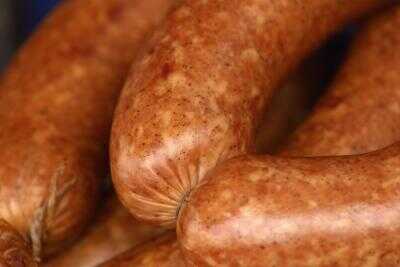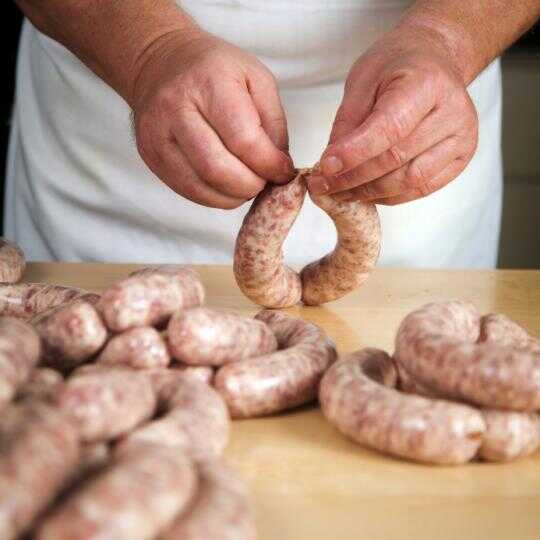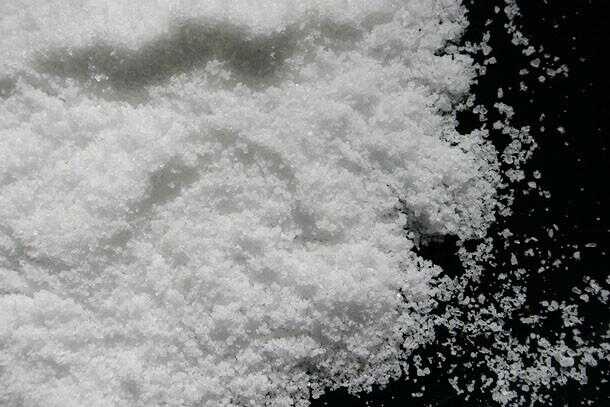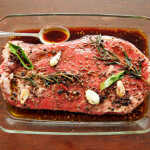Salt flower is a name widely used in haute cuisine by chefs, but, after all, What is “flower of salt”? It is the thin layer of crystals that forms on the surface of salt flats, it is not refined, that is, it does not undergo any type of chemical treatment, therefore it does not lose its natural and unique characteristics. Continue reading O que é flor de sal?
Author: Eduardo Artisanal Charcuterie
How to make sausage?
Real sausage is an emulsified mixture of meat, fat and seasoning. The basic difference between a sausage and a sausage lies in the proportions of these ingredients and the emulsification techniques, which transform the mixture into a homogeneous and creamy mass, often aerated due to the type of process adopted. Continue reading Como fazer salsicha?
Sea salt, coarse salt and fleur de sel

Refined Salt
First of all, it is necessary to understand that any table salt, regardless of its origin, will be considered refined when it goes through a process of washing, grinding, centrifuging and then drying at a high temperature. Then, through sieving, the “impurities” are separated and removed. Continue reading Sal marinho, Sal grosso e Flor de Sal
Tips for making sausages

Preparing sausages is an art and a pleasure, each sausage can be prepared with different seasonings and types of meat, bringing unique flavors to each creation. Use your creativity and use the basic tips to get great results. Continue reading Dicas para fazer linguiças
How to make sausage?

Learn how to make sausages at home using the correct equipment and procedures to obtain a result that is far superior to the sausages offered by large slaughterhouses, which generally use raw materials that are not very selected (scraps), emulsifying additives, vegetable proteins, colorings, stabilizers, preservatives and fat too much. You will be able to make the best sausage you have ever eaten in your life. Continue reading Como fazer linguiça?
Are smoked foods bad for your health?
Preservatives
Almost all smoked products use sodium nitrate or nitrite as preservative agents. These additives mainly help prevent the proliferation of the bacteria Clostridium botulinum, responsible for botulism. Continue reading Defumados fazem mal à saúde?
Smoking temperatures

Hot smoking This means that the process will take place at a temperature above 65 degrees inside the smoker. The recommended temperature is 82 degrees for sausages (as they contain a lot of fat) and 93 degrees for whole pieces of meat, but it is possible to vary according to your needs or product specificities. Continue reading Temperaturas para defumação
Sodium Nitrite and Nitrate Curing Salts

Sodium nitrate and sodium nitrite, also known as curing salts, are preservative food additives widely used in the food industry, they can be used together or alone. They have a very similar chemical composition. Precisely for this reason, many people get confused when deciding which of the two is best used when preparing preserves or meats that will require periods of curing, smoking, fermentation or extending their shelf life for later consumption. The difference in the chemical composition of these two additives is just one oxygen atom, sodium nitrite (NaNO2) has two oxygen atoms, while sodium nitrate (NaNO3) has one more oxygen atom. Continue reading Sais de Cura Nitrito e Nitrato de sódio
Difference between Brine and Marinade
Marinade
 Marinade is a mixture made up of different seasonings and liquids, usually water, acids and oils, which add flavor mainly to the outer layer of meat. Continue reading Diferença entre Salmoura e Marinada
Marinade is a mixture made up of different seasonings and liquids, usually water, acids and oils, which add flavor mainly to the outer layer of meat. Continue reading Diferença entre Salmoura e Marinada
Curing or preserving foods with salt

To understand the process of preserving food with table salt (sodium chloride) it is necessary to understand how the process occurs. It is not just the food itself that rots (degradative enzymes), but mainly microorganisms, such as bacteria, that consume the food and generate secretions, which can be toxic for human ingestion or can be beneficial and tasty, but it all depends on the type of bacteria and, in most cases, we have no control over which microorganisms are proliferating. Continue reading Curar ou preservar alimentos com sal
